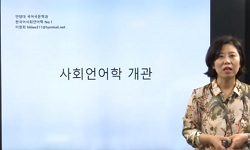In this paper, starting with cases where “sushi” is used instead of “cho-bap” in Korea, various examples of Japanese food names being used were extracted and analyzed from newspaper articles. Twelve Japanese food-related terms, which were sele...
http://chineseinput.net/에서 pinyin(병음)방식으로 중국어를 변환할 수 있습니다.
변환된 중국어를 복사하여 사용하시면 됩니다.
- 中文 을 입력하시려면 zhongwen을 입력하시고 space를누르시면됩니다.
- 北京 을 입력하시려면 beijing을 입력하시고 space를 누르시면 됩니다.

한국 사회에서 사용되는 일본어 음식명에 대한 일고찰- 신문 기사 분석을 중심으로 - = A Study on the Use of Japanese Food Names in Korean Society:Focusing on Newspaper Articles
한글로보기https://www.riss.kr/link?id=A109291474
-
저자
김윤희 (백석예술대학교 호텔관광학부 부교수)
- 발행기관
- 학술지명
- 권호사항
-
발행연도
2024
-
작성언어
Korean
-
주제어
사회언어학 ; 언어변화 ; 일본어 음식명 ; 순화어 ; 신문기사 ; sociolinguistics ; Language change ; Japanese Food Names ; Purified term ; Newspaper article
-
등재정보
KCI등재
-
자료형태
학술저널
-
수록면
93-112(20쪽)
- 제공처
-
0
상세조회 -
0
다운로드
부가정보
다국어 초록 (Multilingual Abstract)
First, twelve Japanese food names that have been introduced into Korean society and extracted for analysis are sushi, ramen, okonomiyaki, onigiri, udon, sashimi, misosiru, sukiyaki, yakiniku, takoyaki, donburi, and soba. Second, an examination of the annual occurrence totals from 1990 to 2023 reveals a continuous upward trend from 1990 to 2005. Although there was a slight decrease in 2006, there was a sharp upward trend from 2007 to 2013. Thereafter, a downward trend was observed until 2020, but from 2020 onwards, the frequency of occurrences increased again. Third, Japanese food names introduced into Korean society can be broadly classified into two categories: those with a corresponding Korean purified term and those without. However, even when a purified term exists, it was found that some of these terms are not easily recognized as referring to the same food as the Japanese food name. Fourth, examining the social background of the increase in Japanese food names, it was found that factors included the increase in the number of Japanese food specialty stores in Korea, the launch of related products, and political and cultural exchange events between Korea and Japan.
This paper examines cases where Japanese food names have been introduced, used, and popularized in Korea, focusing on newspaper articles from 1990 to 2023. In the era of globalization, the process of linguistic contact and borrowing is a natural phenomenon. Some foreign words introduced through various channels become assimilated into the native vocabulary, while others do not. It is necessary to propose standardized assimilated terms that are widely accepted by the public and can be practically adopted in daily use.
In this paper, starting with cases where “sushi” is used instead of “cho-bap” in Korea, various examples of Japanese food names being used were extracted and analyzed from newspaper articles. Twelve Japanese food-related terms, which were selected from these articles, were examined for their occurrences over a 34-year period, from 1990 to 2023. The analysis is summarized as follows.
First, twelve Japanese food names that have been introduced into Korean society and extracted for analysis are sushi, ramen, okonomiyaki, onigiri, udon, sashimi, misosiru, sukiyaki, yakiniku, takoyaki, donburi, and soba. Second, an examination of the annual occurrence totals from 1990 to 2023 reveals a continuous upward trend from 1990 to 2005. Although there was a slight decrease in 2006, there was a sharp upward trend from 2007 to 2013. Thereafter, a downward trend was observed until 2020, but from 2020 onwards, the frequency of occurrences increased again. Third, Japanese food names introduced into Korean society can be broadly classified into two categories: those with a corresponding Korean purified term and those without. However, even when a purified term exists, it was found that some of these terms are not easily recognized as referring to the same food as the Japanese food name. Fourth, examining the social background of the increase in Japanese food names, it was found that factors included the increase in the number of Japanese food specialty stores in Korea, the launch of related products, and political and cultural exchange events between Korea and Japan.
This paper examines cases where Japanese food names have been introduced, used, and popularized in Korea, focusing on newspaper articles from 1990 to 2023. In the era of globalization, the process of linguistic contact and borrowing is a natural phenomenon. Some foreign words introduced through various channels become assimilated into the native vocabulary, while others do not. It is necessary to propose standardized assimilated terms that are widely accepted by the public and can be practically adopted in daily use.
동일학술지(권/호) 다른 논문
-
- 동북아시아문화학회
- 남송우
- 2024
- KCI등재
-
동북아해역도시간 인적 네트워크의 형성과 전개-1930년대 상하이 우치야마 서점을 중심으로
- 동북아시아문화학회
- 서광덕
- 2024
- KCI등재
-
근대 해항도시 부산의 부산수상경찰서 설치- 제국일본의 지배구조와 해항도시의 교섭 -
- 동북아시아문화학회
- 김윤환
- 2024
- KCI등재
-
≪易言≫과 한글본 ≪이언≫을 통해 살펴본 개화기 서구 외래어의 자음 표기 분석
- 동북아시아문화학회
- 이경숙
- 2024
- KCI등재




 KCI
KCI DBpia
DBpia






